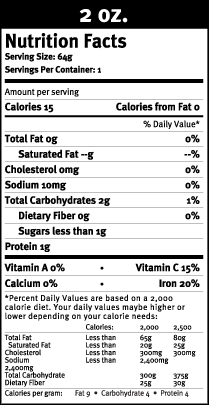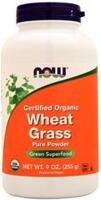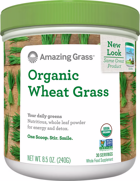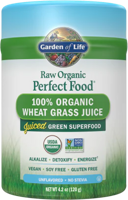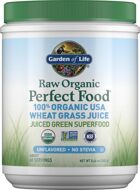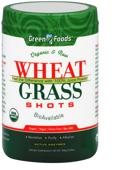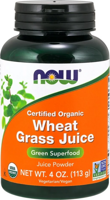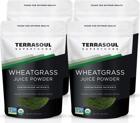Wheatgrass (Triticum aestivum) is a type of young, nutrient-rich grass, cultivated in in the United States and Europe. Part of the wheat family, wheatgrass is packed with amino acids, iron, calcium, chlorophyll, and vitamins A, C, and E. Its roots and underground stems are used for medication, in the form of extracts, pills, tinctures and, most commonly, juice. But it's also used in blended drinks and tea.[1, 2]
Uses
Wheatgrass is used for a variety of conditions including:[1, 2, 3]
- Ulcerative colitis
- Joint pain
- High blood pressure
- Cholesterol
- Cancer
- Arthritis
- Diabetes
- Kidney stones
- Oral inflammation
- Tooth decay
- Colds and coughs
- Fever
- Gout
- Anemia
- Constipation
- Skin conditions
- Infections
It is also utilized as a colon cleanse, and blood oxygen level boost.[1, 2]
Does wheatgrass work
According to Dr. Brent Bauer, a Mayo Clinic internist, while wheatgrass may be promoted as a good way to help reach daily vegetable servings, the lack of conclusive studies available make it difficult to verify these claims.There is also no evidence to support the effectiveness of wheatgrass as a treatment or cure for disease. One study did find that it might be helpful in treating ulcerative colitis.[1, 3]
Recommended dosage
The recommended or suggested dosage depends on a variety of factors, including age and health. From the limited studies that have been done on wheatgrass, there isn't enough evidence to establish a dose range.[3]
Side effects and safety concerns
Wheatgrass is basically safe to eat, but if you are allergic to gluten, grass, or wheat, or you have celiac disease, do not consume wheatgrass without first consulting your healthcare provider. Also, avoid it if you are pregnant or breast feeding. It is most likely safe for medicinal purposes, but effectiveness has yet to be determined through scientific studies.[1][3]
Side effects that may occur from consuming wheatgrass:[2, 3]
Wheatgrass is packed with amino acids, iron, calcium, chlorophyll, and vitamins A, C, and E.
- Headache
- Nausea
- Throat swelling
- Loss of appetite
- Hives
Warnings and considerations
- At this time, there is no evidence or proof of negative interactions with other medications. If you take medication, talk to your doctor before starting a new supplement or dietary regimen.[3]
- Herbs and other supplements are not regulated by the government. Product safety and consistency are not guaranteed. Effects may vary according to brand and batch.
References
- Brent A. Bauer, MD; Mayo Clinic; "What Is Wheatgrass -- And Why Is It In My Drink?" October 2010
- American Cancer Society; "Wheatgrass;" Reviewed 2008
- WebMD.com; "Wheatgrass"
Wheatgra News on PricePlow
-
Nov 19, 2025 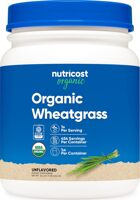
Product News
Nutricost Organic - Organic Wheatgrass was created.
Category: Wheatgrass -
Jan 11, 2024 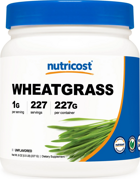
Product News
Nutricost WheatGrass was created.
Category: Wheatgrass -
Jun 28, 2021 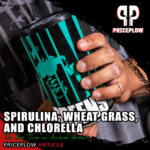
Blog Post
Spirulina, Wheatgrass, and Chlorella: The Big Three "Greens" in Animal Greens
Spirulina, Wheat Grass, and Chlorella: A deep dive into the main three phytonutrients in Universal Nutrition's Animal Greens "superfood pak"
Sign up for future Wheatgra news!
Click the button below to sign up for future Wheatgra news, deals, coupons, and reviews!
